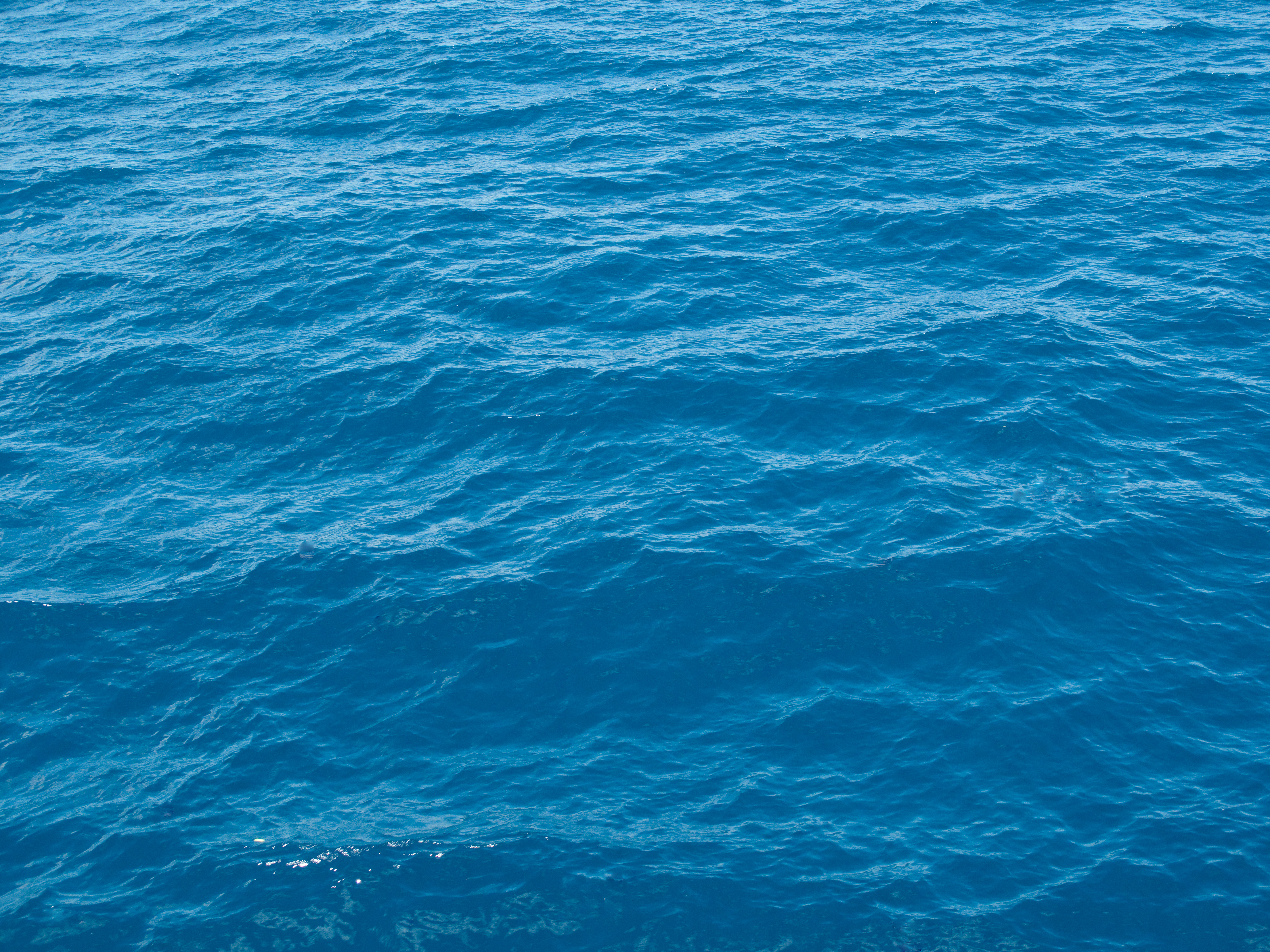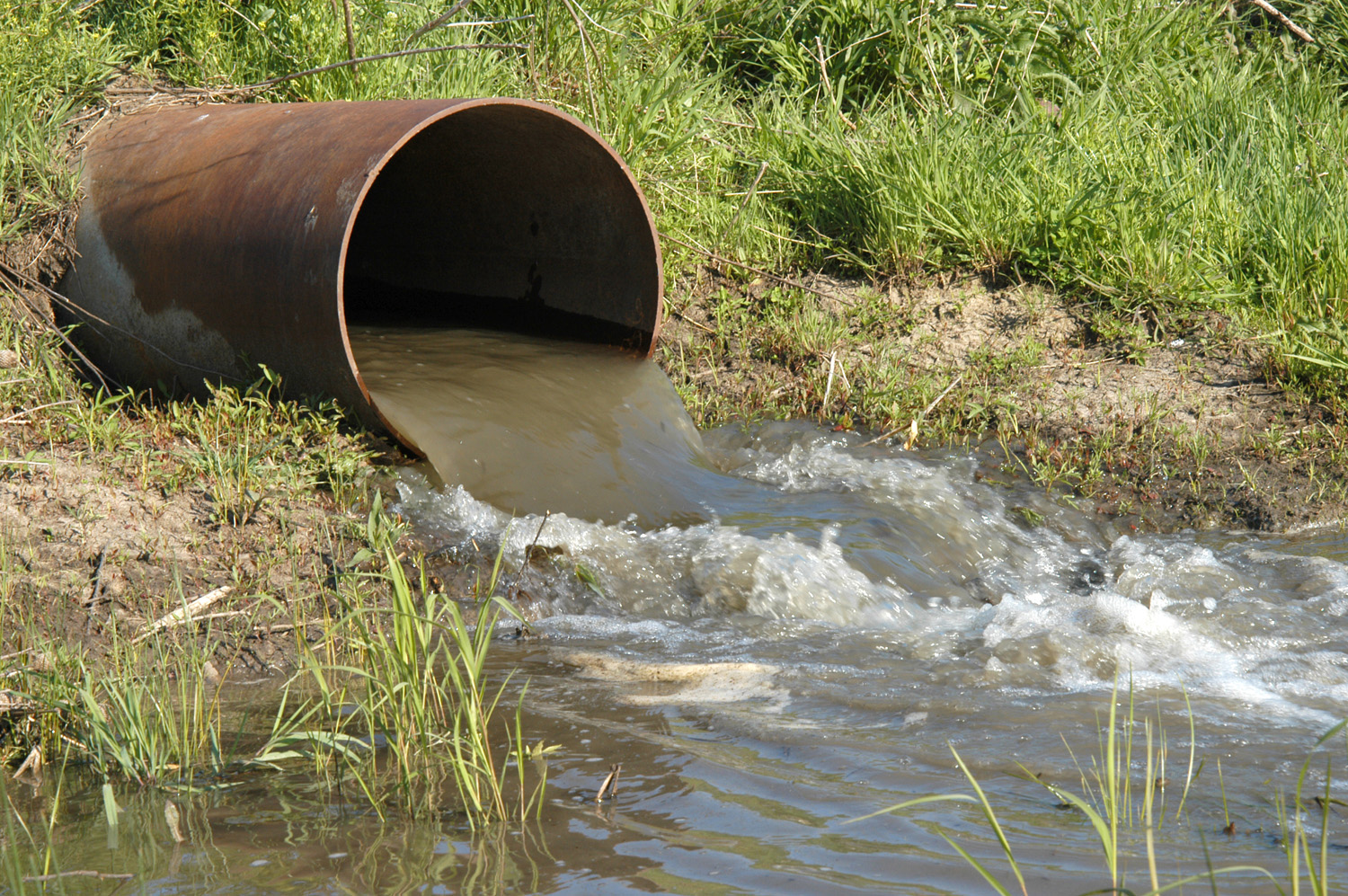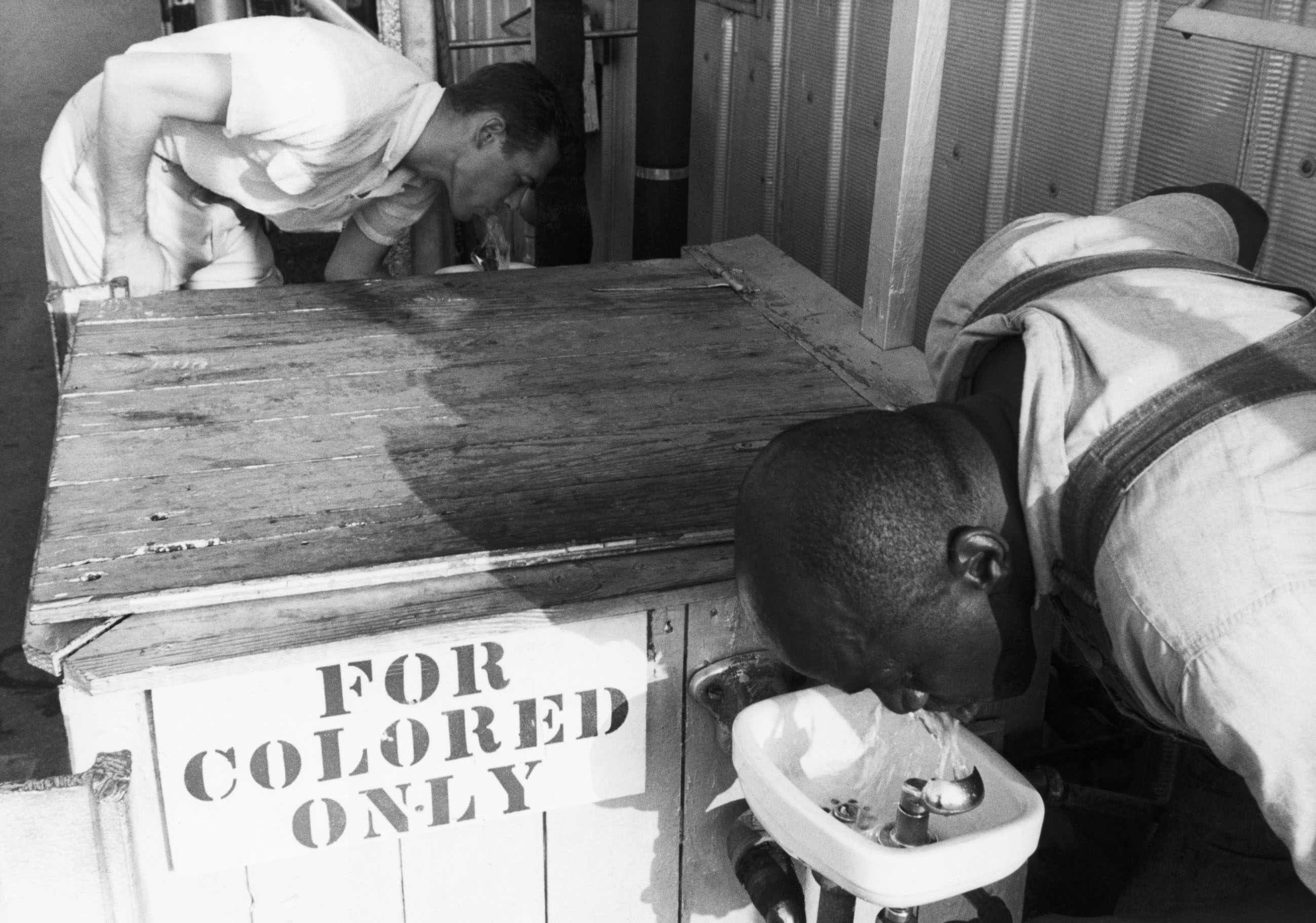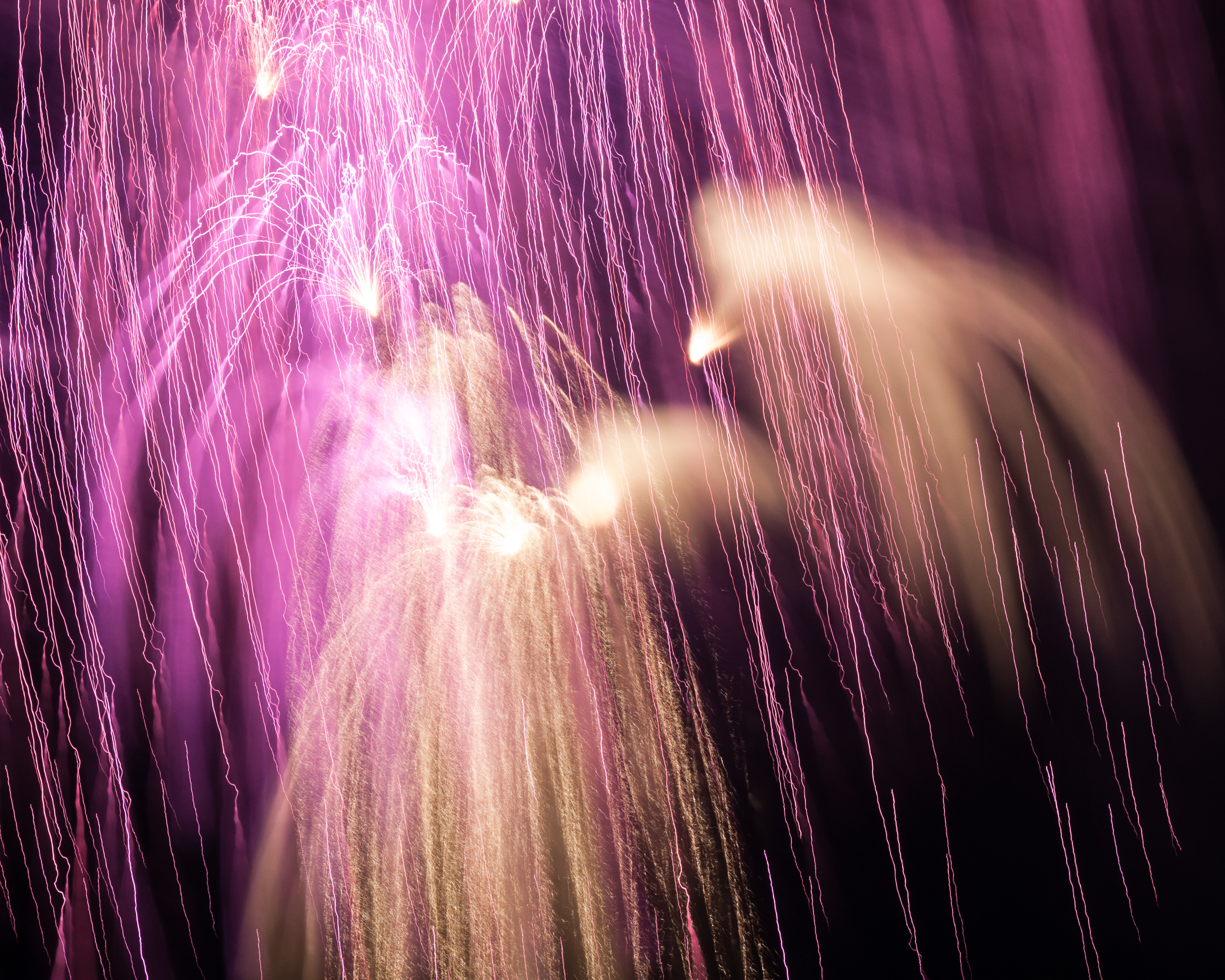The rainbow is my favorite environmental phenomenon. After a fierce storm, Mother Nature drapes her paints across the sky. A dazzling array of color is created out of thin air. Beauty is hidden within. The rainbow is the perfect image to represent the hydrological spectrum. This concept integrates hydrology with the electromagnetic spectrum, just as a rainbow is the product of water and light. Can you imagine a more perfect union? A drop of water refracts a ray of light to produce Nature’s most beautiful work of art. From One, there is All.
The entire color spectrum is contained within a stream of white Light. Just as the diffraction of light through a prism illuminates a hidden layer of reality, so does the entirety of a rainbow. Naturally, a rainbow does not stop at the horizon, but continues beyond our perception to complete its circle. Nor do the colors disappear at the end of the visible spectrum, only our ability to see them. So neither should our description of natural processes be limited by our senses. The shimmer of the rainbow on water could be considered a ‘quantum’ image, a reflection of the quantum nature of reality, revealing the constant vibration of energy and completing the full circle.

A circle depicts a continuum, but only in two dimensions. In our 3-D world, we need a sphere. The hydrosphere is a scientific reference to all forms of water on the planet. We also describe a ‘sphere of influence’ to denote the relevance of a particular concept or person to other fields or people. We will see that the hydrosphere of influence reaches far beyond the scientific realm, leaving no field uninspired. The hydrological spectrum connects water to its vast sphere of influence through the colors of the rainbow. Each color in the hydrological spectrum has a story to tell, providing a watery lens through which to view the world.
Blue

Blue water. Immediately, your imagination probably starts to conjure a favorite dark blue lake; a peaceful, navy, babbling brook; the inviting, crystal clear turquoise of tropical seas; or the crashing of indigo ocean waves on the coast. All of these are blue water – the icons in our water cycle – rain, runoff, surface water (rivers, lakes, oceans), and groundwater, as well as infiltrated subsurface water that flows through the soil matrix. The complete trip around the water cycle is exclusively blue water that falls as rain, and is carried to the ocean by rivers where it evaporates. But it’s also the water that fills our reservoirs, provides a home for aquatic life, and maybe even ends up in our drinking glasses.
Blue water is the source of all life. Its constant journey around the water cycle continuously refreshes all life forms and hydrates the land. It may follow a daily timeline, a seasonal phase, an annual cycle, or geologic sequences as “fossil water” over 10,000 years old. All the water that has ever been on the planet is still here, neither supplemented nor destroyed, simply reused and recycled. In the last few decades, we have managed to pollute even our rainfall so it’s no longer safe to drink straight from the sky, unless you like the taste of acid rain. Our blue water supplies are critical, but we will see that there are other ways to tap into the hydrological spectrum.
Green

Green water. This one might not conjure any specific images, and I wonder if you’ve ever heard of green water. But to an ecohydrologist, green water is fundamentally important. It’s all the water in the natural cycle I haven’t already called blue: water in plants and soil water that doesn’t flow through the soil matrix. Green water is left behind in the soil because it’s held by matric forces (suction). Then plants can use it to grow. Without going into too much detail, the notion of ecohydrological separation implies a two-water worlds hypothesis: blue water, or mobile water that supplies streamflow and groundwater; and green water, or non-mobile water in soil that contributes to evapotranspiration. Plants require hydration just like us, and store water in cells in bark, leaves, and xylem so they don’t dry out. This is green water. So in a sense, green water is also the source of life because without plants, nothing else would exist. Since we don’t see green water, it does not receive nearly as much attention as dwindling snowpacks or drying streams. But we all recognize a parched agricultural field or orchard during severe drought… no irrigation, no green water.
To say green water doesn’t move is an oversimplification. Water is always moving through its cycle. Transpiration halts water on its path to the ocean and returns it to the atmosphere. Hydrated cells still die, so even plant water is eventually transported and reused. Soil water, the green water of the two-water worlds, is unable to move freely since it is held in the pore spaces between soil particles, unlike the blue water that flows right through the soil matrix. The amount of green water left behind after gravity has drained the soil is “field capacity.” Trees and shrubs need to be able to access this water during droughts, which requires an enormous amount of pressure to release the matric forces adhering the water to the soil cavities. Large trees and drought-resistant shrubs have evolved incredible mechanisms to utilize green water. They are able to generate multiple atmospheres of negative pressure to counteract both gravity and matric potential forces to draw water up from the roots to the leaves. They behave exactly like a straw, allowing the vacuum created by evapotranspiration to draw water up from the soil for continued replenishment. Below a certain threshold, trees and shrubs can no longer exert enough pressure to counteract the matric forces, and we call this the “wilting point.” The amount of soil water between field capacity and wilting point is “plant-available water storage capacity” and it is entirely dependent on green water to keep our fields green.
Yellow

Yellow snow. “Don’t eat the yellow snow.” A lesson for the ages. OK, yes, yellow is referring to urine, which is just water anyway! But I’m using this color to tell the story of snow drought. We will be lucky if we can instruct our children not to eat the yellow snow one day… you know, that is, if there is any snow left. Instead we might be passing on Bear Grylls’ wisdom to stay hydrated: “drink your own yellow water.” Anyway, this is really not about yellow water.
Yellow is about snow and climate change. There are two kinds of snow drought. ‘Warm snow drought’ is when rising temperatures prevent precipitation from falling as snow. ‘Dry snow drought’ is when there is just no rain or snow. Obviously, dry snow droughts are bad for everyone. But warm snow droughts are an interesting case, because they’re wet but not at the right time. Now that I’ve explained blue and green water, you can understand that snow is a critical storage along the cycle to transform blue water to green water as it slowly melts and fills soil water stores as green water, rather than falling as rain and running off right into the stream as blue water. Thus, the snowpack is essential to delay the timing of water input to a point when vegetation can actually use it. Warm snow droughts are a potentially threatening aspect of climate change for montane forest ecosystems that suffer from summer droughts. My dissertation explores the effect of snow drought on vegetation along a hillslope in the Sierra Nevada, considering how loss of the snowpack influences the partitioning of precipitation between blue and green water. Check it out!
Gray

Gray water. Gray might seem an odd color to include in a rainbow, but it might be the most important type to include in the hydrological spectrum. Gray water is ‘reclaimed’ water, or water that has been recycled, lightly filtered, and reused for waste and irrigation primarily. Gray water is the first deviation from Nature in the water cycle, as humans have engineered themselves into natural cycles during the Anthropocene. As water-scarce regions become less able to rely on natural sources to replenish aquifers and reservoirs, gray water is going to become increasingly common in our public water cycle.
Even though we like to think of water as a renewable resource, it should really be called a “reusable” resource. The water cycle simply recycles the same water over and over again. We could learn a thing or two from Mother Nature. The idea behind gray water is that we don’t really need to be using freshly filtered blue water to flush our toilets, we could use water ‘reclaimed’ from the sink or shower that isn’t really that dirty. No one is asking you to drink or shower in reclaimed water (yet), but maybe that nice grass lawn on the golf course shouldn’t be competing with drinking water resources. The grass not only doesn’t care what is in its water, it can use some of those pollutants as food. We can’t do that. Gray water allows us to prioritize how water is being used in society and stretch our limited resources a bit further.
Brown

Brown water. Following gray water, can you guess? Sewage. Not a fun topic, not as appealing as blue water, but important nonetheless. Brown water is the unfortunate product of a “civilized” society with a sewer system. Sure, it beats the middle ages when we were all dying of dysentery, but now we have an over-engineered solution to a relatively simple problem. How much water are we wasting to dispose of our own waste? It would help if we were using gray water for sewage, but we still need to make sure we’re not just dumping sewage back into the environment. Everyone likes to complain about low-flow toilets, but what about no-flow toilets? Composting toilets are awesome and would completely remove the problem of “brown water.”
A water-scarce future requires creative thinking and many places have already been forced to adapt. We like the idea of gray water, right? Here’s where it gets good: blue water becomes gray water which becomes brown water, which will be magically transformed back to blue water for our own little closed public water cycle. Oh, you don’t like that idea? Well the Philippines is already doing it. The future is here, and it’s not pretty.
Black

Black water. While we’re on the theme of dark waters, black water may have the darkest theme of all as an homage to the legacy of racism in America. Even something as fundamental as water was segregated in the Jim Crow era. My dad always tells the story of being a kid in NYC in the 1950s and finding a water fountain with ‘colored water.’ To his dismay, it was just normal water although he did create a stir as a white boy drinking out of a ‘colored fountain.’
The image of segregated water may feel outdated, but rest assured, it is alive and well in ‘modern America.’ The people of Flint, MI, mostly black and poor, have not had clean drinking water for years since the Flint Water Crisis piped leaden water into their taps. Aging infrastructure and political neglect in historically-deprived communities can still create justice issues for access to clean water. Unfortunately, black water can take many forms or even colors, where it is often some shade of brown….
Orange

Orange water. Another form of dark water is orange. You might see orange water in OH, PA, OK, TX, places with substantial natural gas deposits. In that case, the water was contaminated with fracking chemicals. Orange water is polluted water, and it is usually concentrated in communities that have neither the financial nor political resources to combat the issue. Even though I grew up in rural PA, I was lucky enough to not have been exposed firsthand to the effects of fracking on local water supplies. Sink faucets pouring out flammable water, kids playing in orange-red streams, babies born with birth defects, children with lead poisoning. Orange water may actually be killing us, and unlike black water, it does not discriminate.
Are we really willing to sell our health to corporations who pollute our waters and air for profit, while allowing them to extract natural resources and burden the local communities with ubiquitous health problems? What is the value of blue water on our little blue dot? We are deeply affected by our environmental quality. We are what we eat, but we are also what we drink. Poor water quality will infuse every cell of our body, poisoning us from the inside out.
Red

Blood. We are a body of water. 60% water to be precise. Humans are an integral part of the hydrological cycle, processing water through our bodies to exist just like any other organism. The implications of orange water for human health have already been described, but it is because of our red water that these connections exist. Blood is composed of four substances: red and white blood cells, plasma, and platelets. The red blood cells transport oxygen using hemoglobin which is what makes them red. Plasma transports blood cells, hormones, and proteins, picks up waste products, and helps to maintain fluid balance. Plasma is our liquid component, containing 92% water, and blood is 55% plasma; hence, red water.
In our body, plasma is responsible for immunity, blood clotting, maintaining blood pressure, volume, and pH balance. Other examples of plasma include lightning, aurora borealis, excited gas in neon signs, solar winds, welding arcs, the Earth’s ionosphere, tails of comets, and stars. We are literally made of stardust. But wait, it gets better. Blood is fluid connective tissue. The heart is the pump which circulates blood throughout the entire body. The circulatory system (measured by heart rate variability) is highly affected by solar storms (ejected plasma from the sun). Basically, certain periods of psycho-physical agitation one may be experiencing could very well be caused by solar activity! Studies have also shown vibrational synchronization between the human autonomic nervous system and geomagnetic activity in the ionosphere. The Earth vibrates at a fundamental frequency of 7.83 Hz, called the Schumann resonance, which can be thought of as the Earth’s heartbeat. This same frequency is the dominant brain wave rhythm of all mammals in a resting state, the transition between human’s alpha and theta waves which border our deeper states of consciousness. Exposure to the Schumann resonance can improve blood pressure and heart rate, and overall health. We are not only made of stardust, we are intimately connected to the stars and Lover Earth Herself.
Purple

Purple rain. The classic 80s power ballad from Prince inspired a cultural aesthetic. The suffusion of purple rain into art and fashion created an artistic identity that was instantly recognizable as psychedelic patterns of purple paisley, swirling together in torrential whirlpools. The meaning behind purple rain supposedly relates to purple symbolizing the end of the world and rain being the cleansing factor. Water has always been a deeply inspiring theme for poets, musicians, artists, designers, architects, and philosophers. Rivers as replenishing, rain as eroding, waves as therapeutic, water can evoke many emotions. Water is Lover Earth’s primary tool for creating her breathtaking landscapes, launching waterfalls over steep cliffs and sculpting away rocks into monumental valleys. Open your senses to see, feel and hear Nature’s inspiration.
White

Whitewater. Whitewater symbolizes Lover Earth’s power and strength. Water can be calm and soothing, but at its most intense, water begins to boil, froth and frenzy. Whitewater is energetic. We find it in river rapids, at the crest of waves, and the bottom of waterfalls. Here, water is being channeled and forced against some barrier, transferring its momentum into impact where it strikes with enough energy to wear away the Earth over time. The result is dispersed molecules of water that are spread out enough to scatter all the wavelengths of light. This is why you may also see a rainbow in ocean spray and waterfalls. Whitewater is another perfect example of the combination of water and light.
We’ve seen how green water can play an ecological role. Well whitewater is a geologic force, carving river valleys and shaping coastlines over millennia. It performs erosion passively, simply following the path of least resistance. Whitewater’s power comes at the expense of its control. Sometimes the stream is calmly meandering through wide, lush valleys, other times it’s cascading over steep, narrow cliffs, thunderously echoing through the canyons. To commune with the flow of water is to relinquish control, accept phenomena as they are, carry only what is necessary and let go of what one no longer needs.
Gold

Golden shower. If you don’t know, a golden shower is when a partner urinates on you for sexual pleasure. Am I really including a second reference to urine in my hydrological spectrum? Yes, and for good reason. Because urine is just water!
First, I’m going to preempt the concerns over sexual promiscuity. If a golden shower makes you uncomfortable, I urge you to explore those feelings and ask if they are simply a reaction to an extremely sexually prude society. If so, this is a perfectly good opportunity to embrace sexual freedom and allow people to explore their kinks in fun and safe ways. If there is a health or cleanliness concern, I just want to remind you that it’s really just water. If you are well-hydrated, you should be passing clear water anyway!
Next, let’s clear the air over talking about pee. In a discussion about water, it’s not surprising that urine might come up twice. We all know whether we’ve been drinking enough water and the body will inform us multiple times a day. There’s really nothing gross about it, since it’s just bodily waste with natural gold coloring from excess vitamins. Golden water? Sounds like a privilege reserved for King Midas.
Finally, I can make my last point. We are a miniature water cycle. We consume (hopefully blue) water, process it through our bodies as blood, and dispose of it as golden water. Our physiology depends on external water quality. As without, so within. Orange water affects both the environment and our own health. We are linked to the broader hydrological cycle and the entire hydrological spectrum. We cannot separate ourselves from the Earth system since the Water cycle ultimately connects us. We are joined to Lover Earth by her Waters and we share our fluids. To destroy the planet is to destroy ourselves. To heal the planet is to heal ourselves.
Black water demonstrates a legacy of differentiation and segregation that must be mended. Now, black and white mix like the dance of yin and yang. The swell of white water can scour away the harms of black water. The combination of black and white does not erase either, but produces a dull hue of each. Gray water is the solution to our water problems. We need to reconsider our relationship with water. Climate change, extreme drought and water scarcity are causing our blue water and yellow snow to disappear. To coexist in the water cycle requires innovation. We may need to accept some hard truths. Green water for your front lawn is not a priority when there are limited resources available. Brown water can easily be disposed of if we reconfigure our sewage, but orange water can disrupt the entire system in a closed cycle. We cannot continue to let companies drain and jeopardize our water resources. Our red water depends on it. Allow the purple rain to inspire change and cleanse our spirits. Next time you’re caught in a storm, thank Lover Earth for her golden shower.
All photos taken from Wikimedia Commons, unless otherwise noted. Except the rainbow watercolor, that is mine.


A fitting reflection for National Poetry Month, Louie! Thank you for sharing your thoughts and insights and teaching me a few things about our favorite molecule!
Happy springtime, Zoe
LikeLike
Thanks Zoe! Glad you enjoyed it.
LikeLike